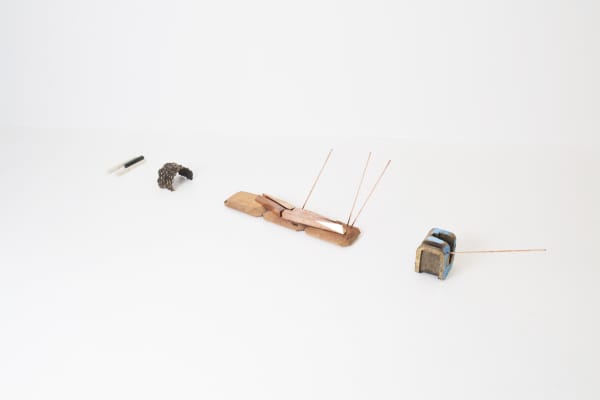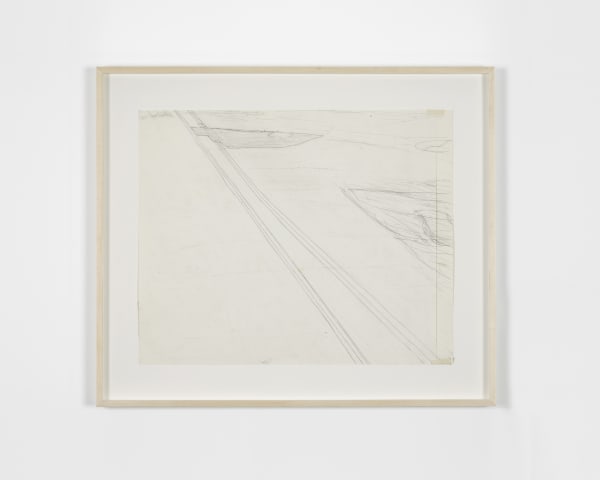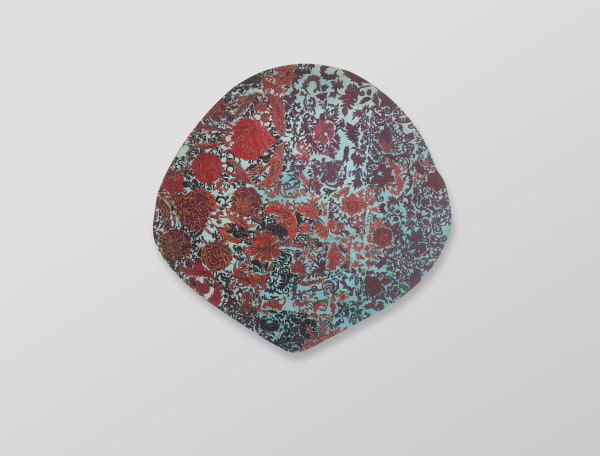Lucy Skaer, Carol Rhodes, Hanneline Visnes: Heavy Weather
GRIMM is proud to present Heavy Weather, an exhibition organised by Lucy Skaer (UK, 1975) with selected works by Carol Rhodes (UK, 1959-2018) and Hanneline Visnes (NO, 1972). The works in the show are united by the theme of temporality and landscape, meditating on nature, how it is altered and effected by human vision and action. This is Skaer’s second exhibition with the gallery in Amsterdam and follows her recent collaborative exhibition The Green Man held at the Talbot Rice Gallery in Edinburgh (UK).
Lucy Skaer’s main body of work in the exhibition is titled La Chasse, after Le Livre du Chasse, a hunting manual by Gaston Phébus from the fourteenth century. Skaer was compelled by illustrations in this medieval manuscript for their representation of time and form. Many different times of year are depicted in one frame and the whole is made cohesive through geometric pattern. Within one illustration, phases of the deer’s reproductive life are set alongside the final stages of a hunt –the hunters, horses, dogs, and prey all appear in heightened states. Skaer has reworked her existing sculptures to mimic sentient animals in a hunting scene, drawing inspiration from the complex notion of time and narrative. Lozenges and ingots, made from copper, bronze and clay are laid out on the floor, struck by arrows to leave a trail of blood, made from glass. This sculptural tableau, composed of smaller sets of works can be read as an allegory to creation and death, the animate and inanimate, and legibility and abstraction.
Within La Chasse, groups of abstract sculptures are carefully arranged to create works that bare titles such as A Day with Breeze and Fog, Hare Springs from the Yew Woods Over Marsh’s Pool, Knocks the Bough, Caterpillars Fall Twisting to the Ground (2018) and Morning Dew, the Hare Rests by Marsh’s Pool (2018). These sculptural sentences are an idiosyncratic evocation of language in her sculptures, describing subjects, movement and weather in a manner that corresponds with poetic phrases that Skaer found in a speculative weather almanac from the University of Edinburgh collection dating from 1785 —with entries such as ‘Cooling gales, with showers’ and ‘Violent Thunder’. These works function as an exploration of the role of feeling, emotion and subjectivity in how we experience history, objects, images, or situations, despite degrees of abstraction or transmutation.
In the paintings of Hanneline Visnes, which surround Skaer’s La Chasse, stylised motifs of animals and plants are used to comment on the representation and control of nature. Visnes merges disparate patterns, motifs, and subjects into her meticulously crafted paintings. She explores and harnesses the power of colour, utilising complementary hues that bounce and fight off the surface, causing her still lifes to dance with agitated energy. By treating her ‘subject’ and background with the same process, the traditional focal point of the work is blurred, and by working on irregularly shaped surfaces, the fragmental final works feel like part of something larger, like archaeological specimens belonging to another time. In Visnes’ work there is a long-term preoccupation with the decorative, which has its roots in the craft traditions of her native Norway. With a restrained and economical approach to the painting process, Visnes produces work informed by opulent and valuable furnishings, jewellery, and fashion, as well as observations from nature.
Carol Rhodes is known for her unique style of landscape painting that depicts imaginary places seen from high altitudes. These tacit works are undefined, yet painted with intimacy and vague familiarity. Rhodes has described each painting as a self portrait of sorts.
“Literally as well as metaphorically, she paints in no man’s land, an “edgeland” of categories that is at once documentary and fictional, idealized and anti-idealist. Despite the relentless quotidian drabness of the world she describes, her paintings are caprices of sorts, making her perhaps a latter- day Canaletto, one shot through with something of the ethos of Robert Smithson. At once delicate and diffident, composed and plain spoken, her paintings hover between the prosaic and the metaphysical.”
–David Cohen, artcritical, 2018





































